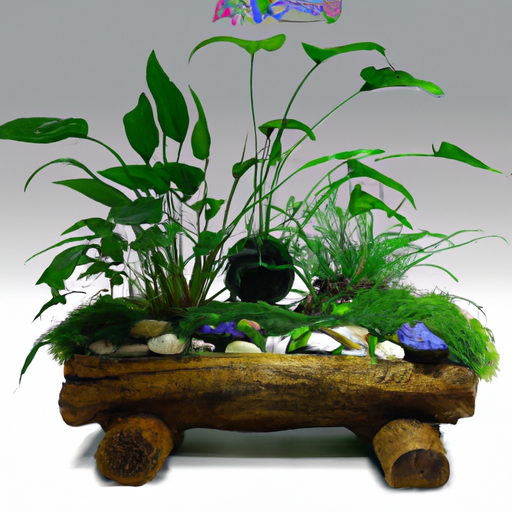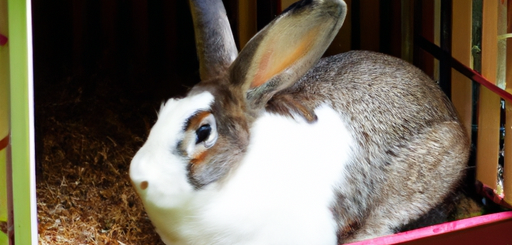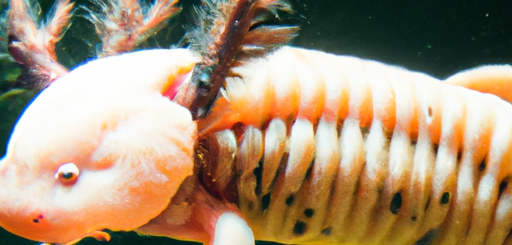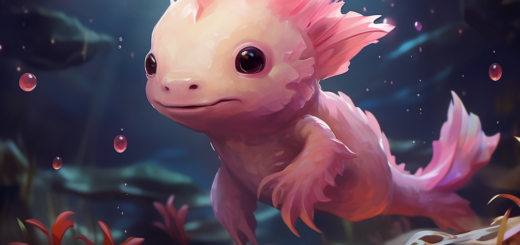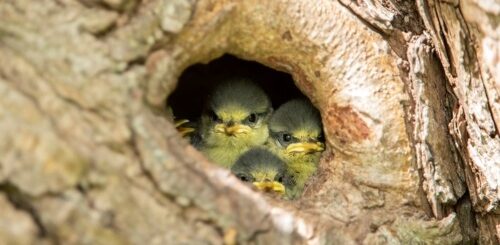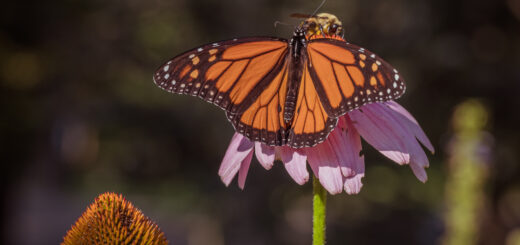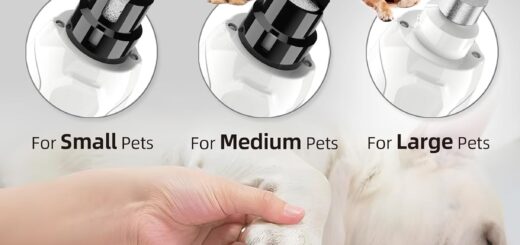Axolotl Care Guide: Creating A Healthy Habitat For Your Aquatic Friend
In this comprehensive Axolotl Care Guide, you will discover everything you need to know about creating a healthy habitat for your aquatic friend. From setting up the perfect tank to ensuring optimal water quality and providing the right nutrition, this article will provide you with all the guidelines and tips to ensure your axolotl’s well-being and happiness. So, grab your notebook and get ready to become an expert in axolotl care!
1. Tank Setup
1.1 Tank Size
When setting up a tank for your axolotl, it is crucial to consider the size of the tank. Axolotls are aquatic creatures that require ample space to swim and explore. A minimum tank size of 20 gallons is recommended for one axolotl, with an additional 10 gallons for each additional axolotl. Providing a spacious tank will ensure that your axolotl has enough room for movement and exercise.
1.2 Filtration System
A reliable filtration system is essential for maintaining the water quality in your axolotl tank. Axolotls produce a significant amount of waste, which can lead to high levels of ammonia and nitrites in the water. A high-quality filter will help remove these harmful substances and keep the water clean and clear. It is recommended to choose a filter that is specifically designed for aquariums and suitable for the size of your tank.
1.3 Lighting
Although axolotls are primarily nocturnal creatures, providing some form of lighting is still important for their overall health and well-being. Lighting helps to establish a natural day-night cycle and encourages normal behavioral patterns. When choosing a light source, it is crucial to avoid any harsh or bright lights that can cause stress to your axolotl. Opt for soft, low-intensity lighting that mimics natural daylight.
1.4 Temperature
Maintaining the correct temperature in your axolotl tank is crucial for their health and survival. Axolotls are cold-water creatures and prefer temperatures between 60°F to 68°F (15°C to 20°C). It is important to invest in a reliable aquarium heater to keep the water within the appropriate temperature range. Make sure to monitor the water temperature regularly to ensure it stays within the desired range.
1.5 Substrate
Choosing the right substrate for your axolotl tank is important for their comfort and safety. Axolotls are known to accidentally ingest small particles, so it is best to avoid using gravel or small pebbles as substrate. Sand or large-sized gravel are better options as they are less likely to be ingested. Additionally, live plants can be added to the tank as they provide hiding spots for the axolotl and help improve water quality.
1.6 Decorations
Adding decorations to your axolotl tank not only enhances its aesthetic appeal but also provides essential elements for your axolotl’s well-being. Rocks, caves, and driftwood are great additions as they offer hiding spots and create areas of interest. It is important to ensure that all decorations are securely anchored to prevent them from accidentally falling on your axolotl and causing injury.
1.7 Water Quality
Maintaining excellent water quality is crucial for the overall health and well-being of your axolotl. Regular water testing should be conducted to monitor parameters such as ammonia, nitrites, nitrates, and pH levels. Proper filtration, water changes, and monitoring water parameters will help ensure a clean and stable environment for your axolotl.
1.8 Water Changes
Regular water changes are an essential part of axolotl tank maintenance. It is recommended to perform a 20-25% water change every week to maintain optimal water quality. When performing a water change, it is important to use dechlorinated water that is at the same temperature as the tank water. Gradual water changes are preferable to sudden changes in temperature or water chemistry, as this can stress your axolotl.
1.9 Cycling the Tank
Before introducing your axolotl into the tank, it is crucial to establish a beneficial bacteria colony through the process of cycling. Cycling the tank involves building up beneficial bacteria that break down harmful ammonia and nitrites into less toxic nitrates. This process can take several weeks, and it is important to monitor water parameters closely during this period. Adding a source of ammonia, such as fish food or pure ammonia, will help kick-start the cycling process.
1.10 Monitoring Parameters
Regularly monitoring water parameters such as ammonia, nitrites, nitrates, and pH levels is crucial for maintaining a healthy environment for your axolotl. Investing in reliable water testing kits will allow you to accurately assess these parameters. Make it a habit to test the water at least once a week and take appropriate action if any parameters fall outside the recommended ranges.
2. Feeding
2.1 Axolotl Diet
Providing a balanced and nutritious diet is essential for the overall health and well-being of your axolotl. Axolotls are carnivorous and primarily eat live or frozen foods. Some suitable food options include bloodworms, brine shrimp, daphnia, and blackworms. It is important to ensure that the food provided is appropriately sized to prevent choking or digestive issues.
2.2 Feeding Frequency
Axolotls should be fed 2-3 times a week, with each feeding session consisting of an amount of food that can be consumed within 5-10 minutes. Overfeeding should be avoided as it can lead to obesity and other health issues. It is crucial to monitor your axolotl’s eating habits and adjust the feeding frequency accordingly.
2.3 Feeder Options
If you are unable to provide live or frozen foods, there are alternative options available. Commercially prepared axolotl pellets can be a suitable substitute for live or frozen foods. However, it is important to ensure that the pellets are of high quality and specifically formulated for axolotls. It is recommended to soak the pellets in water before feeding to prevent potential digestive issues.
2.4 Avoiding Overfeeding
Overfeeding can be detrimental to the health of your axolotl. Uneaten food can quickly deteriorate water quality and lead to harmful bacterial growth. It is important to remove any uneaten food within a few hours after feeding to maintain water quality. Monitoring your axolotl during feeding can also help prevent overfeeding, as they may show signs of losing interest or becoming sluggish if they are full.
2.5 Monitoring Eating Habits
Monitoring your axolotl’s eating habits is crucial for evaluating their health and appetite. Consistent and healthy eating patterns indicate a thriving axolotl. Any sudden changes in appetite or a complete loss of interest in food may indicate underlying health issues and should be addressed promptly. Regularly observe your axolotl during feeding to ensure they are actively consuming food.
2.6 Vitamins and Supplements
In addition to a balanced diet, providing essential vitamins and supplements can help ensure the overall health of your axolotl. Calcium and vitamin D supplements are particularly important for promoting proper bone and skeletal development. It is recommended to consult with a veterinarian or a knowledgeable axolotl expert to determine the appropriate supplements for your axolotl.
2.7 Providing Hiding Spots during Feeding
Axolotls are known to prefer feeding in their hiding spots or around decorations. Providing hiding spots during feeding time can help reduce stress and create a more natural feeding environment. This can be achieved by strategically placing rocks, caves, or plants near the feeding area. Ensuring a stress-free feeding environment will encourage your axolotl to consume their food more comfortably.
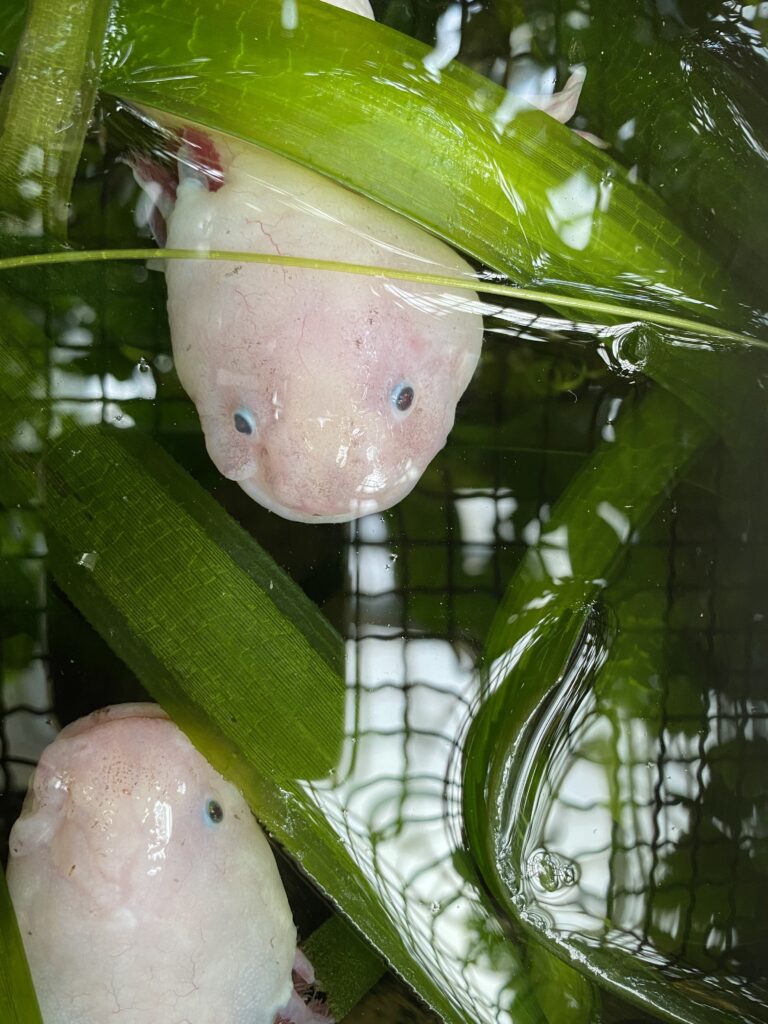
This image is property of images.unsplash.com.
3. Water Quality Maintenance
3.1 Testing Water Parameters
Regularly testing the water parameters in your axolotl tank is crucial for maintaining optimal water quality. Ammonia, nitrites, nitrates, and pH levels should be monitored regularly to ensure they remain within the appropriate ranges. Testing kits specifically designed for aquarium use can provide accurate readings of these parameters. Aim to test the water at least once a week or more frequently if needed.
3.2 Ammonia and Nitrite Control
Ammonia and nitrites are harmful substances that can accumulate in the water. They are produced through the decomposition of waste and uneaten food. It is important to maintain a low level of ammonia and nitrites in the tank to prevent stress or illness in your axolotl. Regular water changes, proper filtration, and avoiding overfeeding are effective measures in controlling ammonia and nitrites.
3.3 Nitrate Reduction
Nitrates, although less harmful than ammonia and nitrites, can still be detrimental to the health of your axolotl if allowed to accumulate. High levels of nitrates can lead to poor water quality and stress in axolotls. To reduce nitrates, regular water changes, the use of live plants, and maintaining a consistent cleaning regimen are essential. These measures will help in maintaining a healthy and balanced nitrogen cycle in the tank.
3.4 pH Regulation
The pH level of the water plays a crucial role in the health and well-being of your axolotl. Axolotls prefer a slightly alkaline pH range of 6.5 to 8. It is important to regularly monitor and adjust the pH level to ensure it remains within the desired range. pH-regulating products specifically designed for aquarium use can help maintain a stable pH level in the tank.
3.5 Chlorine and Chloramine Removal
Tap water often contains chlorine and chloramines, which can be harmful to your axolotl. It is crucial to remove these chemicals before adding water to the tank. Allowing tap water to sit for 24 hours will help dissipate chlorine. Alternatively, using a water conditioner specifically designed for removing chlorine and chloramines will ensure the water is safe for your axolotl.
3.6 Filtration Maintenance
A properly maintained filtration system is essential for maintaining water quality in your axolotl tank. Regularly cleaning the filter media and replacing it as necessary will ensure the effective removal of waste and toxins from the water. It is important to follow the manufacturer’s instructions for maintenance and cleaning to avoid any damage to the filter or disruption to the beneficial bacteria colony.
3.7 Regular Water Changes
Performing regular water changes is crucial for maintaining optimal water quality in the axolotl tank. As mentioned earlier, a 20-25% water change every week is recommended. During a water change, it is important to siphon out any debris or waste from the substrate and ensure that the replacement water matches the temperature and chemistry of the tank water. Consistent water changes will help keep your axolotl’s environment clean and healthy.
3.8 Monitoring Algae Growth
Algae growth is a common occurrence in aquariums and can affect the water quality in your axolotl tank. While some algae growth is normal and even beneficial, excessive algae can be problematic. It is important to regularly monitor and control algae growth by maintaining a consistent cleaning regimen, reducing the amount of light exposure, and ensuring proper nutrient balance in the tank. Avoid using chemical algaecides, as they can be harmful to your axolotl.
3.9 Controlling Harmful Bacteria
Harmful bacteria can quickly multiply and pose a threat to the health of your axolotl. Regular testing, proper filtration, and maintaining a clean tank will help control bacterial growth. Avoid overfeeding, remove any uneaten food, and promptly address any signs of illness or disease in your axolotl. Maintaining a healthy and stable environment will minimize the risk of harmful bacteria affecting your axolotl’s health.
4. Health and Disease Prevention
4.1 Routine Health Checks
Performing routine health checks on your axolotl is crucial for early detection of any signs of illness or distress. Regularly observe your axolotl for changes in behavior, appetite, and appearance. Axolotls are susceptible to various health issues, including fungal infections, bacterial infections, and parasitic infestations. Promptly addressing any potential health concerns will help prevent the spread of diseases and ensure the overall well-being of your axolotl.
4.2 Signs of Stress or Illness
Being aware of the common signs of stress or illness in axolotls is important for early intervention and treatment. Some common indications of stress or illness include loss of appetite, lethargy, abnormal behavior, redness or discoloration, open sores or lesions, and sudden weight loss. If you notice any of these signs, it is important to investigate further or seek advice from a veterinarian specializing in exotic aquatic species.
4.3 Quarantine Procedures
When introducing new axolotls or tank mates into your existing setup, it is important to follow proper quarantine procedures. Quarantine helps prevent the spread of potential diseases or parasites to your existing axolotls. New arrivals should be kept in a separate tank for a minimum of 4-8 weeks, with regular health checks and observation. It is important to maintain strict hygiene practices during quarantine to avoid cross-contamination.
4.4 Disease Prevention Tips
Preventing diseases is key to maintaining the overall health and well-being of your axolotl. Some tips for disease prevention include maintaining optimal water quality, avoiding overfeeding, maintaining proper filtration, and providing a stress-free environment. Additionally, it is crucial to quarantine any new arrivals and practice good hygiene practices when handling or maintaining the axolotl tank.
4.5 Dealing with Common Diseases
Despite our best efforts, axolotls can still be susceptible to common diseases. Some common diseases include fungal infections, bacterial infections, and parasitic infestations. If you suspect your axolotl is suffering from a disease, it is important to promptly isolate the affected individual and seek advice from a veterinarian specializing in exotic aquatic species. Treatment protocols will vary depending on the specific disease and may involve medicated baths, antibiotics, or other appropriate treatments.
4.6 Medication and Treatment
Administering medication and treatment to your axolotl should only be done under the guidance of a veterinarian or a knowledgeable axolotl expert. Self-medicating or using over-the-counter treatments can be harmful or ineffective. When seeking treatment for your axolotl, provide accurate and detailed information about the symptoms and behavior of your axolotl. Follow the prescribed treatment plan diligently and monitor your axolotl closely throughout the treatment process.
4.7 Consulting a Veterinarian
If you have any concerns or questions about the health or well-being of your axolotl, it is essential to consult a veterinarian specializing in exotic aquatic species. Only a qualified veterinarian will have the knowledge and experience to accurately diagnose and treat any health issues that may arise. Regular check-ups and routine health assessments are also recommended to ensure the long-term health and happiness of your axolotl.
4.8 Regular Handling and Observation
Regular handling and observation of your axolotl can provide valuable insight into their overall health and well-being. When handling your axolotl, make sure to use proper techniques to prevent any harm or stress to your aquatic friend. Regularly observe their behavior, appetite, and appearance to detect any potential health issues early on. This will allow you to take appropriate action and seek professional help if necessary.
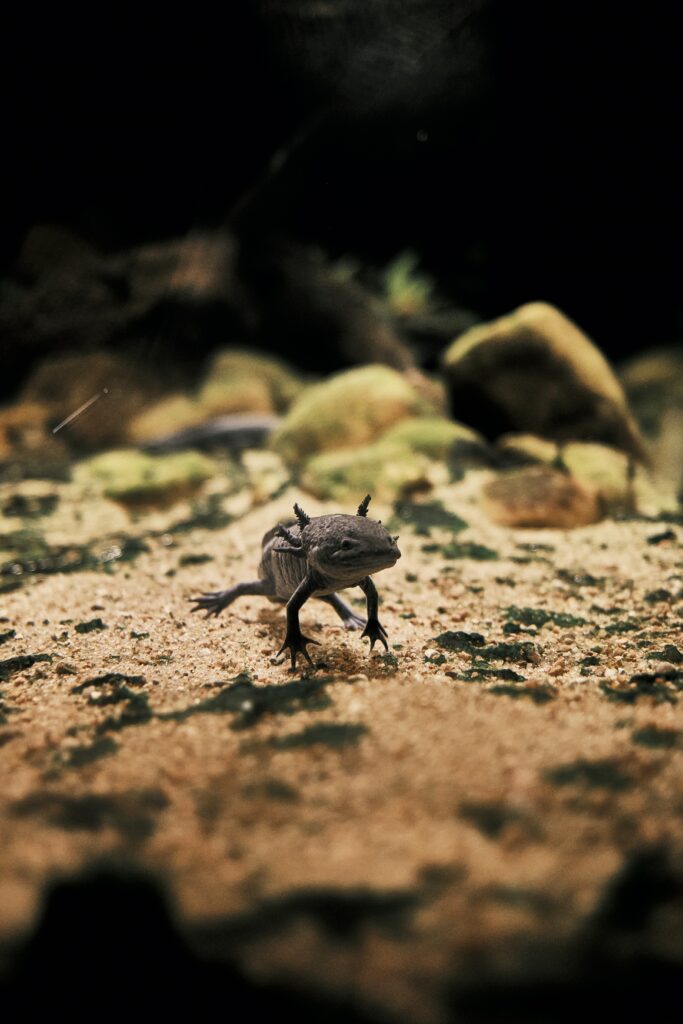
This image is property of images.unsplash.com.
5. Tank Mates and Compatibility
5.1 Solo or Group Living
Axolotls can be kept alone or in groups, depending on personal preferences and tank size. Keeping axolotls in groups can provide social interaction and enrichment, but it is crucial to ensure that the tank is large enough to accommodate multiple individuals comfortably. It is important to monitor the behavior and interaction between tank mates and separate any individuals that display aggression or bullying.
5.2 Appropriate Tank Mates
When choosing tank mates for your axolotl, it is important to select species that are compatible and have similar care requirements. Some suitable tank mates for axolotls include other axolotls of similar size, small fish species such as minnows or white cloud mountain minnows, and certain species of snails. Before introducing any tank mate, research their compatibility, size, and behavior to ensure a harmonious and stress-free environment.
5.3 Avoiding Aggressive or Nippy Fish
It is important to avoid aggressive or nippy fish species when choosing tank mates for your axolotl. Axolotls have delicate skin that can be easily damaged, and aggressive fish may nip at their gills or tail. Fish species known to be fin nippers or aggressive should be avoided to prevent any potential harm to your axolotl. It is always best to research the temperament and compatibility of any potential tank mates before introducing them to your axolotl tank.
5.4 Compatible Snail Species
Snails can make suitable tank mates for axolotls as they are generally peaceful and do not pose a threat. Some compatible snail species include apple snails, mystery snails, and ramshorn snails. Snails can contribute to the overall ecosystem of the tank by helping to control algae growth. However, it is important to monitor the snail population and manage it if necessary to prevent overpopulation.
5.5 Monitoring Interactions
When introducing tank mates to your axolotl tank, it is important to closely monitor their interactions. Some axolotls may be more territorial or aggressive than others, and it is crucial to ensure a harmonious environment for all individuals. Pay attention to any signs of aggression, territorial behavior, or stress in your axolotls or tank mates. If any issues arise, separate the individuals to prevent injury or undue stress.
5.6 Adjusting Tank Setup for Tank Mates
When adding tank mates to your axolotl tank, it may be necessary to make some adjustments to the tank setup. Providing adequate hiding spots and additional decorations can help create separate territories and reduce potential conflicts. It is important to ensure that the tank size remains appropriate for the total number of inhabitants and that all individuals have enough space to thrive.
5.7 Separating Aggressive or Incompatible Individuals
If any of the tank mates, including axolotls, display aggression or are incompatible with each other, it is important to separate them promptly. Aggressive behavior or persistent bullying can lead to stress, injuries, and overall poor health in both aggressive and victimized individuals. Providing separate tanks or establishing clear physical barriers within the tank can help prevent further conflicts and ensure the well-being of all individuals.
6. Breeding and Reproduction
6.1 Sexual Maturity
Axolotls reach sexual maturity between the ages of 10 to 18 months, depending on various factors such as diet, genetics, and environmental conditions. It is important to monitor their growth and development to determine when they are ready for breeding. Sexual maturity can be seen in physical signs such as a wider body, larger head, and visible cloaca in females.
6.2 Identifying Male and Female Axolotls
Distinguishing between male and female axolotls requires careful observation of physical characteristics. Male axolotls tend to have a slimmer body, a more pronounced cloaca that extends beyond the body, and swollen vent glands during the breeding season. Female axolotls, on the other hand, have a rounder body, a smaller and less prominent cloaca, and may display a bulging abdomen when carrying eggs.
6.3 Breeding Tank Setup
Creating an appropriate breeding tank is essential for successful axolotl reproduction. A separate tank with a capacity of at least 20 gallons is recommended for breeding purposes. The tank should be provided with suitable substrates such as marbles or mesh to prevent the axolotls from swallowing the eggs. Live plants or artificial structures can be added to the tank to provide hiding spots for the female and a place for the eggs to be attached.
6.4 Inducing the Breeding Process
Unlike some other aquatic species, axolotls do not require any special conditions to induce the breeding process. Simply providing a suitable breeding tank with proper water quality and temperature is typically sufficient to trigger natural breeding behaviors. However, it is important to note that successful breeding is not guaranteed, and not all axolotls will breed even under ideal conditions.
6.5 Monitoring Egg Laying
After successful mating, the female axolotl will lay her eggs and attach them to various surfaces within the breeding tank. It is important to carefully monitor the egg-laying process and ensure the eggs are securely attached and not at risk of being consumed or damaged. The female axolotl should be removed from the tank once she has completed egg-laying to prevent any potential cannibalism.
6.6 Egg Care and Incubation
Axolotl eggs require specific care and conditions for successful incubation. Axolotl eggs are delicate and should be handled with extreme care. The water temperature should be maintained between 64°F to 68°F (18°C to 20°C) to ensure proper development. It is crucial to maintain optimal water quality and monitor the eggs closely for any signs of fungus or mold. The incubation period typically lasts for 2-4 weeks, depending on the temperature.
6.7 Raising the Juveniles
Once the axolotl eggs have hatched, the juveniles begin their development. It is important to ensure a suitable and safe environment for the growing axolotls. Providing appropriate tank size, water quality, and nutrition are crucial for their healthy growth. Regular water changes, maintaining stable water parameters, and adjusting the tank setup as the juveniles grow are essential for their well-being.
6.8 Separating Males and Females
To prevent unwanted breeding and potential aggression, it is important to separate the male and female axolotls as soon as they reach sexual maturity. Maintaining separate tanks for males and females will prevent any accidental mating and allow for more controlled breeding, if desired, in the future. This will also help prevent overcrowding and potential stress in the tank.

This image is property of images.unsplash.com.
7. Handling and Maintenance
7.1 Proper Handling Techniques
Proper handling techniques are important to ensure the safety and well-being of your axolotl. When handling your axolotl, it is crucial to wet your hands first to minimize stress and potential damage to their delicate skin. Gently scoop your axolotl from underneath, supporting their body and avoiding any unnecessary pressure on their gills or limbs.
7.2 Preventing Tail Injuries
Axolotls have the remarkable ability to regenerate many parts of their body, including their tails. However, it is still important to be cautious and avoid causing any unnecessary tail injuries. When handling or transferring your axolotl, make sure to support their body and avoid any sudden movements or twists that may strain or damage their delicate tails.
7.3 Cleaning the Tank
Regular tank cleaning is essential for maintaining a healthy and hygienic environment for your axolotl. During tank cleaning, it is important to remove any debris or waste from the substrate, clean the glass or acrylic surfaces, and replace a portion of the water. However, it is important not to remove all the beneficial bacteria during cleaning, as they help maintain water quality. Follow a regular cleaning schedule and avoid using harsh chemical cleaners that can be harmful to your axolotl.
7.4 Maintaining Equipment
Proper maintenance of your aquarium equipment is important for their longevity and optimal performance. Regularly check and clean the filter, heater, and any other equipment. Replace any worn-out or malfunctioning parts promptly to avoid any disruption to the tank environment. Regular maintenance and upkeep of equipment will help ensure a stable and healthy habitat for your axolotl.
7.5 Preventing Cross-Contamination
Preventing cross-contamination between different tanks or aquariums is crucial for protecting the health of your axolotl and other aquatic pets. Using separate equipment, such as nets or siphons, for each tank or aquarium will minimize the risk of introducing harmful organisms or pathogens. It is important to practice good hygiene, such as washing hands thoroughly before and after handling, to prevent the spread of potential diseases.
7.6 Regular Tank Maintenance Schedule
Establishing a regular tank maintenance schedule is important for the overall health and well-being of your axolotl. This schedule should include regular water changes, tank cleaning, equipment maintenance, and monitoring of water parameters. Consistency in tank maintenance will help prevent imbalances in water quality and minimize the risk of diseases or health issues in your axolotl.
7.7 Monitoring Axolotl Behavior and Appearance
Regular monitoring of your axolotl’s behavior and appearance is essential for detecting any potential health issues or changes in their overall well-being. Pay attention to their activity levels, appetite, and any physical changes or abnormalities. Keeping notes or a journal can help track any changes over time and is particularly useful when seeking veterinary advice or diagnosing potential health concerns.
8. Axolotl Growth and Development
8.1 Axolotl Life Stages
Axolotls undergo various life stages as they grow and develop. From hatching as larvae to reaching sexual maturity, each stage is marked by distinct physical and behavioral changes. It is important to understand these life stages and provide appropriate care and nutrition for each stage. Regular monitoring of their growth progress will give you valuable insight into their development and overall health.
8.2 Growth Rate Factors
Several factors can influence the growth rate of axolotls. The quality and quantity of food, water temperature, tank size, and genetics are some of the key factors that can affect their growth. Providing a nutritious diet, optimal water conditions, and adequate space for exercise will promote healthy growth in your axolotl. It is important to avoid overfeeding or overcrowding, as these can have a negative impact on their growth rate.
8.3 Regeneration Abilities
One of the remarkable abilities of axolotls is their ability to regenerate various body parts, including limbs, spinal cord, and even parts of their heart and brain. Regeneration occurs throughout their lifespan, although it is most prominent during the larval and juvenile stages. It is important to provide a suitable environment and proper nutrition to support their regenerative abilities and overall well-being.
8.4 Monitoring Size and Development
Monitoring the size and development of your axolotl is important for assessing their growth progress. Regular measurements and observations will help you track their growth rate, compare it to average growth charts, and ensure they are developing at a healthy pace. Anomalies or sudden changes in size or shape should be noted and investigated further to ensure there are no underlying health issues.
8.5 Tracking Growth Progress
Keeping track of your axolotl’s growth progress is an exciting and informative task for axolotl owners. Measuring their length or weight regularly and recording the results can provide valuable data on their growth rate and overall development. Tracking growth progress over time will help you assess the effectiveness of their diet, tank conditions, and general care. It can also facilitate early detection of any potential health issues.
8.6 Providing Adequate Nutrition
Adequate nutrition is crucial for promoting healthy growth and development in axolotls. A well-balanced diet that includes a variety of live or frozen foods, supplemented with high-quality pellets, will provide the required nutrients for their overall well-being. It is important to feed them appropriately sized food items and adjust their diet as they grow. Regular monitoring of their appetite and body condition will help determine if their nutritional needs are being met.
8.7 Adjusting Tank Setup for Growth
As axolotls grow, it is important to adjust their tank setup to accommodate their increasing size and needs. Providing a larger tank with ample swimming space and suitable hiding spots will ensure their comfort and well-being. Additionally, monitoring and adjusting the water quality parameters, filtration system, and feeding regimen as they grow will help promote optimal growth and overall health.
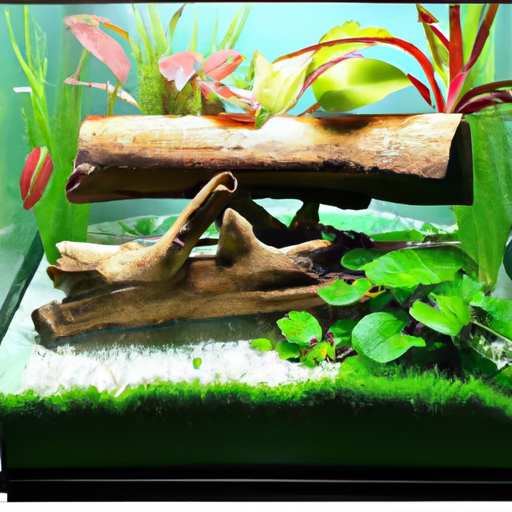
9. Axolotl Handling Care Tips
9.1 Hand Adjusting Techniques
When handling your axolotl, it is important to use proper hand adjusting techniques to minimize stress and prevent any harm to your aquatic friend. Wetting your hands first will help prevent their delicate skin from drying out. Gently scoop your axolotl from underneath, supporting their body and avoiding any unnecessary pressure on their gills or limbs. Handling should be kept to a minimum to reduce stress.
9.2 Proper Holding Positions
Ensuring proper holding positions when handling axolotls is crucial for their safety and comfort. When holding your axolotl, make sure to support their body and avoid any twisting or bending that may strain their delicate tails or limbs. Some axolotls may prefer to rest on your palm, while others may feel more secure with your fingers gently supporting their body.
9.3 Avoiding Stressful Situations
Axolotls are sensitive creatures, and it is important to avoid exposing them to stressful situations. Loud noises, sudden movements, or excessive handling can cause stress and potentially harm your axolotl. It is best to keep their tank in a quiet area away from high foot traffic or areas of excessive activity. Providing hiding spots and maintaining a calm environment will help reduce stress levels in your axolotl.
9.4 Using a Net or Container
Using a net or container can be an alternative method for handling or transferring your axolotl. When using a net, make sure to use one with soft mesh to prevent any damage to their delicate skin or limbs. Gently guide your axolotl into the net, supporting their body and minimizing any stress or discomfort. Similarly, using a container with water can be a suitable method for temporarily moving your axolotl during tank cleaning or maintenance.
9.5 Handling Frequency
Axolotls are delicate creatures, and excessive or unnecessary handling can cause stress and potential health issues. It is important to limit handling to when necessary, such as during tank maintenance, health checks, or transferring them to a separate tank. Regular handling for the sake of entertainment or show can disrupt their natural behavior and contribute to stress.
9.6 Avoiding Harsh Chemicals and Soaps
Avoiding the use of harsh chemicals or soaps when handling or maintaining your axolotl tank is crucial for their well-being. Residues from such products can be harmful to your axolotl and disrupt the delicate balance of the tank’s ecosystem. When cleaning the tank or handling your axolotl, it is best to use dechlorinated water and gentle cleaning agents specifically designed for aquarium use.
9.7 Habituation Training
Habituation training can help your axolotl become more comfortable with the presence of humans and routine handling. By gradually introducing your hand into their tank and offering them food or treats, you can associate your presence with positive experiences. Over time, your axolotl may become less stressed or fearful during handling if habituation training is consistently implemented. Patience and consistency are key to successful habituation training.
10. Behavioral Insights
10.1 Normal Axolotl Behavior
Understanding normal axolotl behavior is important for distinguishing between normal behavior patterns and potential signs of stress or illness. Axolotls are generally active during the night, displaying a variety of behaviors such as swimming, exploring, burrowing, and feeding. They may also exhibit grooming behaviors, rubbing against objects or substrate. Familiarizing yourself with their normal behaviors will help you recognize any abnormalities or changes in their behavior.
10.2 Patterns and Routines
Axolotls, like many other aquatic creatures, thrive on routine and establishing patterns. Providing consistent feeding times, maintaining a stable environment, and following a regular maintenance schedule will help establish a routine for your axolotl. Consistency in their daily routines reinforces a sense of security and reduces stress levels, contributing to their overall well-being.
10.3 Environmental Enrichment
Environmental enrichment plays a crucial role in keeping your axolotl mentally stimulated and active. Adding decorations, plants, and hiding spots to the tank provides opportunities for exploration, creating a more dynamic and engaging environment. Rearranging decorations periodically or providing novel objects can also stimulate curiosity and prevent boredom.
10.4 Reducing Stress and Anxiety
Axolotls are sensitive creatures and can easily become stressed or anxious in certain situations. It is important to create a stress-free environment by avoiding loud noises, sudden movements, and excessive handling. Providing hiding spots, suitable tank mates, and maintaining consistent water quality and temperature will help minimize stress and promote a sense of security for your axolotl.
10.5 Monitoring Activity Levels
Monitoring the activity levels of your axolotl can provide valuable insight into their overall health and well-being. Axolotls are generally active during the night, displaying a variety of behaviors such as swimming, exploring, and foraging. Sudden changes in activity levels, such as increased sluggishness or decreased appetite, may indicate underlying health issues and should be investigated further.
10.6 Recognizing Abnormal Behavior
Being able to recognize abnormal behavior in your axolotl is crucial for identifying potential health issues or stressors. Abnormal behavior may include excessive hiding or isolation, floating at the surface, loss of appetite, lethargy, or persistent scratching against objects. It is important to investigate further and seek advice from a veterinarian if you notice any changes in behavior that persist or worsen.
10.7 Addressing Behavioral Issues
If you notice any behavioral issues or changes in your axolotl, it is important to address them promptly. Investigating the possible causes, such as tank conditions, diet, or stressors, can help identify and rectify any underlying issues. Consulting a veterinarian specializing in exotic aquatic species can provide valuable advice and guidance on how to address specific behavioral issues.
